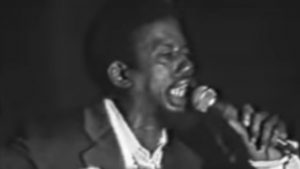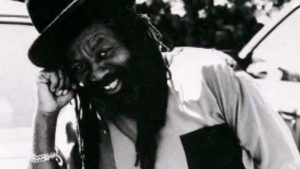
During the Asian financial crisis, I recall the Jamaica Gleaner carried a picture that reportedly showed crowds of South Korean citizens voluntarily turning over their gold jewellery, without compensation, to some government office for it to be melted down to gold, in order to build reserves to support the currency. At the time, I wondered, “suppose Jamaica was in a similar crisis situation, and the population was infected with some virus which had the effect of inducing us to turn our gold jewellery over to our government, what would become of it?” Perhaps currency depreciation might accelerate in our case. Clearly, that culture has fostered a set of expectations of citizens, and their government, that is radically different from ours.
I also recall that some time last year, the BBC carried a story about Iraqi refugee families in Syria. They were not allowed to work – Syria has an unemployment rate above 20 per cent – and having exhausted what savings they had brought with them, how were they to eat? According to the story, a significant number of fathers farmed out their teenage virgin daughters – remember these guys are Muslims – to brothels serving sheiks from foreign lands, to bring in money so that the family could eat. Some of the girls when interviewed acknowledged that they were supporting their families. Since prostitution is illegal in Syria, the authorities periodically raided the brothels and deported the girls to war torn Iraq. Were the fathers morally corrupt? Did they lack enough faith that “god will provide”?
Boyne’s article raises two basic but related questions. He suggests that Jamaica is unlikely to weather the coming storm well because we are unable to cooperate to that end because of a self-centered, consumerist, morally decadent culture, and this manifests overtly in the dancehall art form. In comparison to South Korea, he is partly right.
Art and morality are aspects of what we can call the ideology (i.e., the ideas and beliefs) of society. Here, he points his lance at Marxists who, for him, have not given an adequate account of the role of ideology, in particular, the role of art and morality in bourgeois society. In this, Boyne has excellent company in the form of none other than the renowned French existential philosopher and Marxist, Jean-Paul Sartre. That, however, is as far as the commonality goes, although one can grant that while there is a vast literature from Sartre, Boyne is confined to a newspaper column and, therefore, unlikely to give a detailed justification due to space constraints. Sartre was a social activist, fought with the French Resistance to Nazi occupation, and a critic of bourgeois culture. He tied art, including literature, and social criticism, to the fight for social transformation. In his search for a method, Sartre discussed the difference between existentialism and Marxism, and what this implied for social and historical analysis.
Existentialism stresses the freedom of the individual to choose, no matter what his circumstances, what to do in any given situation no matter how extreme. Psychiatrist Victor Frankel made similar observations based on his experience of how fellow inmates reacted differently to their Nazi concentration camp experience. Sartre, who represented himself as a Marxist (but an anti-Soviet since they brutally suppressed individuality), sought to reconcile the subjectivity and internal freedom of existentialism, with the external structural constraints view of Marxism. He considered Marxism seriously under-developed due to its inadequate treatment of individual “freedom”. For him Marxism, in the tradition of Marx, and in opposition to the Soviets, was a work in progress, and not a finished project. I don’t wish to offer an assessment of Sartre – partly because I have not assimilated his work – but, instead, to point out that Boyne’s position transcends him, and thus, is symbolic, hence, its social significance. Nonetheless, I take it that Sartre, and presumably, Boyne, are calling attention to the role of subjectivity or consciousness in art and morality, in contrast to objective or external factors. I cannot speak for Boyne, but Sartre made it clear that the relation is not one of mutual exclusion.
What is the nature of art? Is art pure expression devoid of content? If art has content, what is its source? Here, is art a passive mirror reflecting society to itself, or is/can art be something more, an intentional consciousness perhaps? Can we divorce art from what people “typically” “must” do to reproduce their existence and to eat? And, how are we to determine the moral rightness or wrongness of art? And what is the role of individual choice in all this?
I venture that there is no such thing as pure expressive art that is socially consumed. Experience suggests that particular art forms tend to be associated with specific social groups that tend to be differentiated based on their lifestyle and access to economic resources. One, in effect, finds oneself in society belonging to a distinct social group with particular tastes for art forms. Even if the art form is similar, the circumstances of its consumption make a qualitative difference to it. Social differentiation is virtually inseparable from tastes in art. This is not to suggest that the relation is a deterministic one, but rather statistical. People tend to adopt the preferences to which they are acculturated. So, then, art has social content. Where does this content come from?
I suggest that the source is the actual life circumstances and, hence, behavioural patterns of the social group with which it comes to be primarily identified. In this regard, art is part representation and part interpretation. It says something, and what it says can be contrary to the intention of the artist. The meaning of art is not given by the artists. Art is a social rather than an individual product. Its meaning derives from the mix of social practices associated with the consumption of the particular art-form. Art, even if one grants that it can be produced in social isolation, is consumed as a social product. It receives a stamp of social approval when it is consumed on a social scale, and the act of consumption comes to be associated with ritual or other well defined practices. Art and its mode of consumption are inseparable. Hence, its meaning is socially determined. Here, dancehall is an excellent example, or the opera for that matter.
The operative question here is, “is art restricted to being a passive mirror?” Can art be imbued with intentional consciousness? The answer, I think, is yes; this is clearly evident from much of early reggae. For art that seeks to go beyond passive representation, to become socially significant, it must receive social recognition. Again, art that is in the public domain, is not an individual product, it must be socially sanctioned by some social group and given an identity. Reggae artists, and the early dancehall deejays, interpreted their experience relative to their position in the broader social system. As such, both forms provided a running commentary on their social experience, and is a kind of historical narrative. Yes people played music for the sheer joy of it, but they also wanted to say something about their life experience. At that time there was not much money to be made from the music. And, then reggae and dancehall became an internationally traded good; the intrinsic value of the music as expression, became less important.
Clearly, an artist can exercise some degree of choice about whether to engage in mirroring and interpreting, the practices of some social group, or intentionally adopt a particular stance; to stand against the grain if you may. Here we must confront a fundamental question. The artist must eat to reproduce his existence. I won’t take on board here the experience of people like Max Romeo who had to flee the island because of the political content of his representation – oh take that Rod from off our back Far I. And her ability to survive from her art is significantly conditional on its social acceptance and the willingness to pay for its consumption.
People must pay to consume the art; if they don’t the artist will starve. If the people will pay for “slackness” but not for “culture”, what should artists do as a group of producers? Choose “culture” and starve? Now let us complicate matters by taking into account that artists compete with each other for social attention and to sell their art in the market. They cannot sell what some significant social group does not want. If a “culture” artist has to compete with a “slackness” and a “violence” artist for market attention, should he choose the “high” road of culture? But then she has to find some other means to eat, which has the effect of taking attention and energy away from, and possibly diminishing the quality of her art. I defer the question regarding the moral character of art for the instalment on morality. Also, I am not yet quite sure what to make of the explicit sexuality of dancehall. Now back to Boyne.
For dancehall culture the takes issue with its celebration of violence, sexuality and bling. Dancehall is symbolic!! What is the basis of this symbolism? And, what exactly does it signify? Violent lyrics are hardly surprising if dancehall artists and the local strata that favours dancehall are surrounded by violence; this is their life situation. Indeed, in actual life, the merchant of violence has social stature; he gets the girl, has the money, has “social mobility”, and so on. If violence confers these social advantages, why should it not be mirrored and celebrated in our sub-culture? In this respect dancehall is “passive” representation – which is not to say it has no reinforcement or perverse social effects.
The question that should be asked is: how did it come about that the merchant of violence acquired these “desirable” attributes and is reproduced through time thus transcending the individual? And, what might we do about it given that understanding? Why not transcend the situation one might ask. And, starve if there is no market? It is not uncommon for artists to say that they deliberately chose what the market wants, and having “made it”, switch to “culture” – Buju Banton, I think, is one example.
If we don’t like the content of art, then one of the things it seems we should do is undertake to understand the conditions that lead to its generation and reproduction and work to change it. To cry it down publicly and then go and sip cocktails is just moralizing, plain and simple. To change it is to question and challenge the social structures and practices that lead to its generation and reproduction. And that involves social organization, public agitation and so on. In taking this path, one quickly finds that life quickly becomes quite interesting. The interests that existing structures serve are unlikely to yield quietly and ride off into the sunset.
There is hardly any doubt that some aspects of Dancehall culture are socially dysfunctional in they undermine social cohesiveness and productive engagement; but then for whom?
There is not much to say about bling other than that it reflects the consumer culture of the broader society. I agree with Boyne that American style consumerism takes an exaggerated form, far removed from what obtains in Europe and Japan. Right now the Chinese are being exhorted to consume more and save less, partly to boost exports form the West. And, Jamaica has a more ostentatious culture than the rest of the English speaking Caribbean. The market requires that people be persuaded to spend, and an entire industry is dedicated to get them to do so. It takes a conscious will to resist that current of persuasion. For the Iraqi father in Syria, I am in no position to pass judgment since I cannot feed them. Neither can I feed the aspiring dancehall artist. In the meantime, I can work towards understanding and altering the system.
I might add in closing that some of these very same issues are discussed by Sartre in his, What is Literature? In that essay he answered the following questions: 1) What is writing? 2) Why write? 3) For whom does one write? 4) What is the situation of the writer in 1947? and 5) Writing for one’s Age. To answer these seemingly trivial questions it took him 200 pages. Clearly, Sartre sought to elevate literature to serve some intentional purpose, but acknowledged the situation of the writer. He elected to give up a university post to pursue conscious writing.
That intentional consciousness and, therefore, the same questions can be directed to the dancehall artist. But what is the life situation of the dancehall artists? Should he choose to work as a construction labourer and “tek bus” (take public transportation) while producing “culture” music, or produce violent dancehall lyrics and drive a “bimma” (BMW)? It is easy for me to decide for him, when my “belly-full” (stomach is full).
Dancehall is no longer solely about entertainment, it is a business and the artist must attend to the preferences of the market. Otherwise, we should be prepared to pay taxes to support the public culture that we want. Let the government propose such a tax to support struggling, aspiring artists and ask the Dancehall and middle income community to help fund it.
Backward art/culture is ultimately the product of backward social structures and practices, but deceptively appears as the immediate product of the artist. To change it, get rid of the underlying structures. Moral preaching, by itself will not do it; move on to the interests behind the preservation of the generative structures. For myself, I end with some moralizing by quoting Sartre to the dancehall artists: “… the writer should commit himself completely in his works, and not in an abjectly passive role by putting forward his vices, his misfortunes, and his weaknesses, but as a resolute will and as a choice” to put art at the service of the fight against oppression, deprivation, and anti-freedom, while figuring out how he/she is to eat.
Kamau Chionesu is Economic & Social Analyst, Jamaicans For Justice and member of online think-tank Caribbean Dialogues












